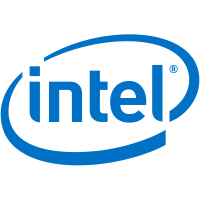Intel HD Graphics 620 vs NVIDIA Quadro FX 3700
Comparative analysis of Intel HD Graphics 620 and NVIDIA Quadro FX 3700 videocards for all known characteristics in the following categories: Essentials, Technical info, Video outputs and ports, Compatibility, dimensions and requirements, API support, Memory, Technologies. Benchmark videocards performance analysis: PassMark - G3D Mark, PassMark - G2D Mark, Geekbench - OpenCL, CompuBench 1.5 Desktop - Face Detection (mPixels/s), CompuBench 1.5 Desktop - Ocean Surface Simulation (Frames/s), CompuBench 1.5 Desktop - T-Rex (Frames/s), CompuBench 1.5 Desktop - Video Composition (Frames/s), CompuBench 1.5 Desktop - Bitcoin Mining (mHash/s), GFXBench 4.0 - Car Chase Offscreen (Frames), GFXBench 4.0 - Manhattan (Frames), GFXBench 4.0 - T-Rex (Frames), GFXBench 4.0 - Car Chase Offscreen (Fps), GFXBench 4.0 - Manhattan (Fps), GFXBench 4.0 - T-Rex (Fps), 3DMark Fire Strike - Graphics Score.
Differences
Reasons to consider the Intel HD Graphics 620
- Videocard is newer: launch date 8 year(s) 7 month(s) later
- Around 44% better floating-point performance: 403.2 gflops vs 280 gflops
- A newer manufacturing process allows for a more powerful, yet cooler running videocard: 14 nm vs 65 nm
- 5.2x lower typical power consumption: 15 Watt vs 78 Watt
- 64x more maximum memory size: 32 GB vs 512 MB
- 2.5x better performance in PassMark - G3D Mark: 922 vs 372
- 2.7x better performance in PassMark - G2D Mark: 217 vs 81
- Around 2% better performance in GFXBench 4.0 - T-Rex (Frames): 3340 vs 3285
- Around 2% better performance in GFXBench 4.0 - T-Rex (Fps): 3340 vs 3285
| Specifications (specs) | |
| Launch date | 30 August 2016 vs 8 January 2008 |
| Floating-point performance | 403.2 gflops vs 280 gflops |
| Manufacturing process technology | 14 nm vs 65 nm |
| Thermal Design Power (TDP) | 15 Watt vs 78 Watt |
| Maximum memory size | 32 GB vs 512 MB |
| Benchmarks | |
| PassMark - G3D Mark | 922 vs 372 |
| PassMark - G2D Mark | 217 vs 81 |
| GFXBench 4.0 - T-Rex (Frames) | 3340 vs 3285 |
| GFXBench 4.0 - T-Rex (Fps) | 3340 vs 3285 |
Reasons to consider the NVIDIA Quadro FX 3700
- Around 67% higher core clock speed: 500 MHz vs 300 MHz
- Around 11% higher texture fill rate: 28 GTexel / s vs 25.2 GTexel / s
- 4.7x more pipelines: 112 vs 24
| Core clock speed | 500 MHz vs 300 MHz |
| Texture fill rate | 28 GTexel / s vs 25.2 GTexel / s |
| Pipelines | 112 vs 24 |
Compare benchmarks
GPU 1: Intel HD Graphics 620
GPU 2: NVIDIA Quadro FX 3700
| PassMark - G3D Mark |
|
|
||||
| PassMark - G2D Mark |
|
|
||||
| GFXBench 4.0 - T-Rex (Frames) |
|
|
||||
| GFXBench 4.0 - T-Rex (Fps) |
|
|
| Name | Intel HD Graphics 620 | NVIDIA Quadro FX 3700 |
|---|---|---|
| PassMark - G3D Mark | 922 | 372 |
| PassMark - G2D Mark | 217 | 81 |
| Geekbench - OpenCL | 4181 | |
| CompuBench 1.5 Desktop - Face Detection (mPixels/s) | 24.275 | |
| CompuBench 1.5 Desktop - Ocean Surface Simulation (Frames/s) | 227.879 | |
| CompuBench 1.5 Desktop - T-Rex (Frames/s) | 1.508 | |
| CompuBench 1.5 Desktop - Video Composition (Frames/s) | 15.582 | |
| CompuBench 1.5 Desktop - Bitcoin Mining (mHash/s) | 30.288 | |
| GFXBench 4.0 - Car Chase Offscreen (Frames) | 1404 | |
| GFXBench 4.0 - Manhattan (Frames) | 1733 | |
| GFXBench 4.0 - T-Rex (Frames) | 3340 | 3285 |
| GFXBench 4.0 - Car Chase Offscreen (Fps) | 1404 | |
| GFXBench 4.0 - Manhattan (Fps) | 1733 | |
| GFXBench 4.0 - T-Rex (Fps) | 3340 | 3285 |
| 3DMark Fire Strike - Graphics Score | 343 |
Compare specifications (specs)
| Intel HD Graphics 620 | NVIDIA Quadro FX 3700 | |
|---|---|---|
Essentials |
||
| Architecture | Generation 9.5 | Tesla |
| Code name | Kaby Lake GT2 | G92 |
| Launch date | 30 August 2016 | 8 January 2008 |
| Place in performance rating | 1336 | 1333 |
| Type | Laptop | Workstation |
| Launch price (MSRP) | $1,599 | |
| Price now | $99.02 | |
| Value for money (0-100) | 8.26 | |
Technical info |
||
| Boost clock speed | 1050 MHz | |
| Core clock speed | 300 MHz | 500 MHz |
| Floating-point performance | 403.2 gflops | 280 gflops |
| Manufacturing process technology | 14 nm | 65 nm |
| Pipelines | 24 | 112 |
| Texture fill rate | 25.2 GTexel / s | 28 GTexel / s |
| Thermal Design Power (TDP) | 15 Watt | 78 Watt |
| Transistor count | 189 million | 754 million |
Video outputs and ports |
||
| Display Connectors | No outputs | 2x DVI, 1x S-Video |
Compatibility, dimensions and requirements |
||
| Interface | PCIe 3.0 x1 | PCIe 2.0 x16 |
| Length | 267 mm | |
| Supplementary power connectors | 1x 6-pin | |
API support |
||
| DirectX | 12.0 (12_1) | 10.0 |
| OpenGL | 4.5 | 3.3 |
Memory |
||
| Maximum RAM amount | 32 GB | 512 MB |
| Memory bus width | 64 / 128 Bit | 256 Bit |
| Memory type | DDR3L / LPDDR3 / LPDDR4 | GDDR3 |
| Shared memory | 1 | |
| Memory bandwidth | 51.2 GB / s | |
| Memory clock speed | 1600 MHz | |
Technologies |
||
| Quick Sync | ||









